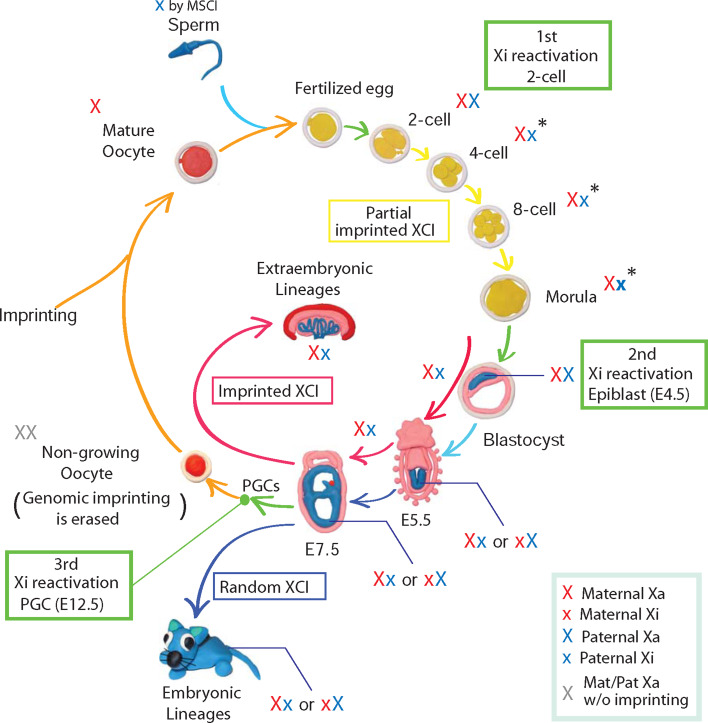Fig. 2.
Dynamic activity of the X chromosome in mouse development. The unpaired X chromosome is silenced during spermatogenesis by MSCI. After fertilization reactivation of X-linked genes is observed at 2-cell stage from the paternal X chromosome (1st wave of Xi reactivation, green arrow). During female preimplantation development, the paternal X chromosome becomes inactivated (yellow arrows), whereby gradual progression of XCI is completed in the developing extraembryonic lineages (imprinted X-inactivation, red arrows). In contrast, the paternal Xi is reactivated in cells of the developing epiblast in the late blastocyst (2nd wave of Xi reactivation, green arrow). Subsequently, the maternal or the paternal X chromosome is randomly chosen to be inactivated during embryogenesis (random X-inactivation, blue arrows). In primordial germ cells (PGCs), Xi is reactivated is associated with reprogramming of epigenetic patterns including genomic imprinting (3rd wave of Xi reactivation, green arrow). Xi reactivation occurs before oogenesis is initiated. During the maturation of oocytes new genomic imprints are established for marking maternal alleles in the next generation (orange arrows). Therefore, the passage of the mouse X chromosome through a generation can involve multiple changes between active and inactive states highlighting periods of epigenetic reprogramming

